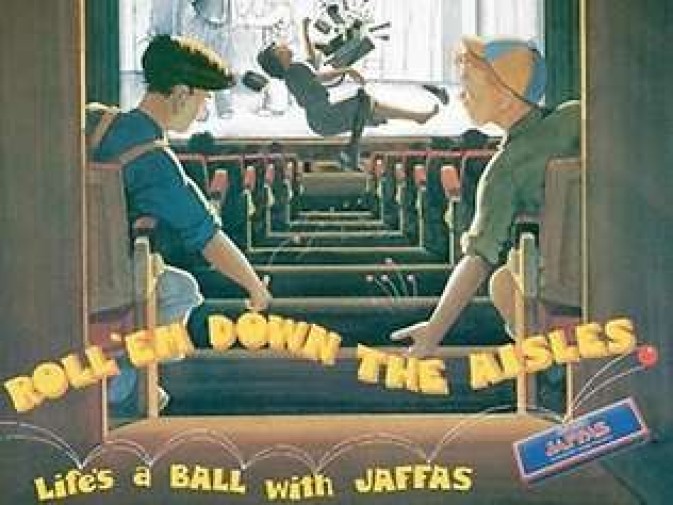Sweet memories tell a good story
by: Jill Rowbotham
From: The Australian, January 05, 2012
Higher Education
Rolling jaffas down the cinema aisles is a time-honoured tradition. Picture courtesy of Nestle.
Rolling Jaffas down the aisle during a movie is an enduring memory of childhood for Australian baby boomers.
But in this, as in so many other areas of life, they were uniquely blessed according to a researcher who has delved into the cultural history of confectionery.
"The children who grew up before the end of World War II didn't have a lot of money, so they would never have put lollies on the ground, they ate them,'' Toni Risson says.
But the relatively more-monied baby boomers could afford to treat lollies as toys. "Part of the magic of lollies is that they can double as toys, and jaffas are like mini cricket balls, you can roll and throw them very well.''
Dr Risson, who wrote her thesis on the subject at the University of Queensland, says that Gen X and Y children, with virtually unlimited access to lollies, have more exotic tastes, running to the gross and disgusting, represented by lollies such as Alien Eyes and Rip Snorter Booger Balls.
She characterises each generation via famous children's books of the time: Alice in Wonderland for the pre-war era, the Enid Blyton Faraway Tree series for the boomers and for the Xs and Ys the Harry Potter series, with unpredictable lollies that may bite, crawl away, or have awful flavours revealed only once they are in the mouth.
Her study traced the development of the confectionery industry in Australia and includes homegrown favourites such as Cherry Ripes, Violet Crumble Bars and Polly Waffles as well as Jaffas, Minties and Fantales.
She also addressed some significant imports, notably Life Savers, which originated in the US but were made in Australia from the mid 1920s, in time to benefit of the rise of beach culture, and the surf lifesaving movement.
She said her work did not deal with the health issues associated with confectionery.
